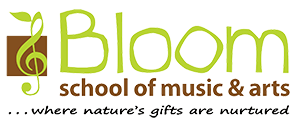Indian dance & visual arts (Exclusive Interview with Meenalochani of Makoolam KalaiKoodam)
This year of 2023, we celebrated Deepavali on 12 November. This ‘Festival of Lights’ is a celebration of the triumph of good over evil, and light over darkness. In this stunning, light-hearted, and humorous production by Cosmic Ultima Pictures for the Indian Heritage Centre, we hear one of the many stories about the origin of Deepavali: the story about Lord Krishna and Narakasura, a demon king.
In the video above (from the 02:10 mark), did you notice the lady dancing the beautiful Bharatanatyam (an Indian classical dance) to the lovely melodies of the flute? Read on for our exclusive interview with her!
I had the opportunity to attend an event by SINDA (Singapore Indian Development Association) earlier this month, and the audience were treated to many wonderful performances by various artistes in the Indian community. Some of these performances were by students of Makoolam KalaiKoodam, an Indian dance school helmed by Meenalochani, our dancer in the video above.
As I watched the performances, I noticed some similarities between the Indian dances and Musikgarten experiences at Bloom School of Music & Arts.
Bloom School of Music & Arts is proud to be one of the few schools in Singapore to offer Musikgarten, an Early Childhood music programme from USA backed by research on child development and psychology, for children 0-6 years old.
Let us take a look at some of the similarities!
–
Performed only by women, Kolattam is a Folk dance, also called ‘Stick Dance’. ‘Kol’ means ‘a small stick’, and ‘Attam’ means ‘play’, essentially making this art form a play or a dance performed with sticks. The girls will hold different coloured sticks, hitting them together at intervals, and dance, usually in a circle, in synchrony to rhythmic tunes.
In our Family Music for Toddlers (FMT) lessons for the 18mo-3yo, we also use sticks, though these sticks are more than just props. We use rhythm sticks to explore rhythm patterns, and also to build awareness of beat. These rhythm sticks are made of natural wood that are smoothly sanded, and have a distinctive clack when tapped together.
It is important to allow young children to hold, carry, and experiment with good-quality instruments made from natural materials. Good tones “tune” their ears, and when allowed to explore, young children discover new ways to play the instruments, and also improvise their own music. They also learn how to determine factors such as when, how long, how loud, etc., thus examining pitch, timbre, dynamics, rhythm, and melody, practising the beat, and making up their own musical games.
–
There are two types of folk dances in this performance.
Mayilattam is an artistic, and religious form of dance performed by women in honour, respect, and admiration of Lord Subrahmanyam, whose beloved animal is a peacock. As they dance, the performers would manipulate a prop that resembles a peacock’s tail feathers.
Oyilattam is a dance of ‘beauty’, as implied by ‘oyil’. This beautiful, traditional dance form, originating from Tamil Nadu, portrays the folk, and mythological stories such as those of Mahabharata, Lord Muruga, and Ramayana. The dancers would wear ankle-bells, and hold handkerchiefs while dancing in time with the music.
Scarves accompany our Family Music for Babies (FMB) lessons often. Scarves are perfect for peek-a-boo musical games, for highlighting flowing movements, for juggling, for costuming, or for anything else one can imagine. Its vibrant colours, lightness, and transparency makes it ideal for babies to learn object permanence, and clarify spatial concepts such as up/down, side-to-side.
Young children enjoy having something in their hands, because they get to explore the texture, the shape, and the various ways to manipulate the object. Having something in hand also focuses their attention, and acts as an extension of their hand and body. The graceful movement of the scarf leads children naturally to expressive movement, and the sensations generated by those movements link them with feelings and memories which are mapped on the whole body.
–
Parai Attam is usually performed with the thappu, the oldest drum in Tamil Nadu history. This drum is an emblem of the Tamil culture. In the ancient days, the ‘parai’ (meaning ‘drum’) were used for many purposes. One usage was as an instrument for communication; gathering people at one place to convey messages, or for announcements of wins or defeats in battles. The thappu is typically played with two sticks, one larger and thinner than the other.
In this performance, the thappu is used as a prop, and the performers beat the drum and dance to its rhythm.
Children in our Family Music for Toddlers (FMT) classes would usually be delighted to be offered drums! Drums emanate a full, resonant sound, and they can be used successfully to reinforce musical concepts such as fast/slow, and loud/soft. There is not only one way to play the drum, and discovering this notion intrigues children!
The drum is another simple instrument to introduce beat, and rhythm patterns. Patterns of every kind are of interest to children. Through playing with rhythm and tonal patterns—brief, easy-to-remember motifs—, children build their own musical vocabulary. Musical understanding begins first with musical patterns, and later develops to an understanding within a wider music literacy framework.
–
This musical experience really goes to show that regardless of where music comes from (whether your homeland, or mine), music-making is active and joyful!
At Bloom School of Music & Arts, we believe that children are innately musical, and they have an inborn ability to sing and move rhythmically, and which we can nurture. The earlier a child is in an environment of active music-making, the more likely that child’s musicality will be awakened and developed.
Consider affording your children to a weekly, set time, dedicated to parent-child bonding on top of being surrounded by music, and musical instruments, and active participation in a musical environment, and learn, together with your children, to make music, both freely and naturally.
Find out more about our Musikgarten programmes (FMT & FMB) by sending us a WhatsApp message to 9278 3315, or filling in the Online Enquiry Form.
We hope to see you soon at Bloom School of Music & Arts!
Meanwhile, read on to find out more about Meenalochani and her academy for Indian Dance & Visual Arts, Makoolam KalaiKoodam. I am so thrilled, and honoured to have met her, and watched her students in their performances. Here is our interview (edited for clarity and continuity):
Hi! Please tell us about yourself!
I am A. Meenalochani, Director of Makoolam Arts Ltd. I conduct Bharatanatyam, an Indian classical dance and Tamil Traditional Folk Arts classes under my school.
We have been performing since 2019 and have established ourselves in Singapore. We have performed widely for every Indian festival in Singapore, including school programmes and workshops.
What inspired you to start a school to teach Indian dance and visual arts?
Dance has been my passion since I was 6 years old.
I decided to take dance as my profession. I thought by teaching, I will be able to share all my dance knowledge and skills with everyone. I wanted everyone to experience the Indian culture.
Please tell us more about your school, Makoolam KalaiKoodam. What will students learn with you?
My students under Makoolam KalaiKoodam learn Bharatanatyam and attend dance exams every year.
For Folk, they get to perform different dance forms every event so that they can experience every Folk style.
After that they are entitled to choreograph their own dance piece for performances.
What do you say is the most important element or trait when learning the various Indian dances, art forms, and music?
The few important things students get to learn is patience, and focus, and also building interest.
Many of my students learnt dance when they were younger, but then dropped out due to several reasons. They come back with a lot of passion and hope to excel in Arts. I teach them how to sustain the interest, and how to love the art and their body.
What are some notable instruments, or props, and what meanings do they hold/express with the music?
We don’t conduct music classes, but students get to understand different genres of music. They are trained to understand the beats in detail so that they can perform. They build a better sense of hearing, and music knowledge.
Is there a difference between classic Indian music, and folk music? Do you have a favourite piece of music you enjoy dancing to?
Indian classical music is different from Folk music.
Classical music is based on devotional songs and storytelling. Whereas in Folk, it’s more upbeat and entertaining.
To me, I love both.
How can someone of a different race and culture appreciate the nuances of Indian music and dance?
The audience can appreciate Indian music and dance by looking at the movements of the dancers. As you watch, say, a classical dance performed in India, look for similarities or differences in Malay and Chinese cultural dances. The classical dance forms of all these 3 ethnic races have some sort of similarities. All ethnic races are taught to appreciate every dance form; we are a multi-racial country.
What would you like to say to our budding musicians, artists, and dancers?
Every dancer, musician, and artist should always continue the passion for the arts. Spread the art forms to the next generations. We try to relate and connect with the new generation so that they appreciate and would show interest to learn.
They should know their cultural dances and music.
There will be challenges we face. but nevertheless, love the art form, and do justice to the art.
To excel, they need to be focused, and continue to be creative in their own ways to produce their own works.
***
From all of us at Bloom School Music & Arts, here is wishing all celebrants:
May you all be surrounded with Love, Light, and Happiness.
Happy Deepavali!
🪔🪔🪔🪔🪔🪔🪔
_














